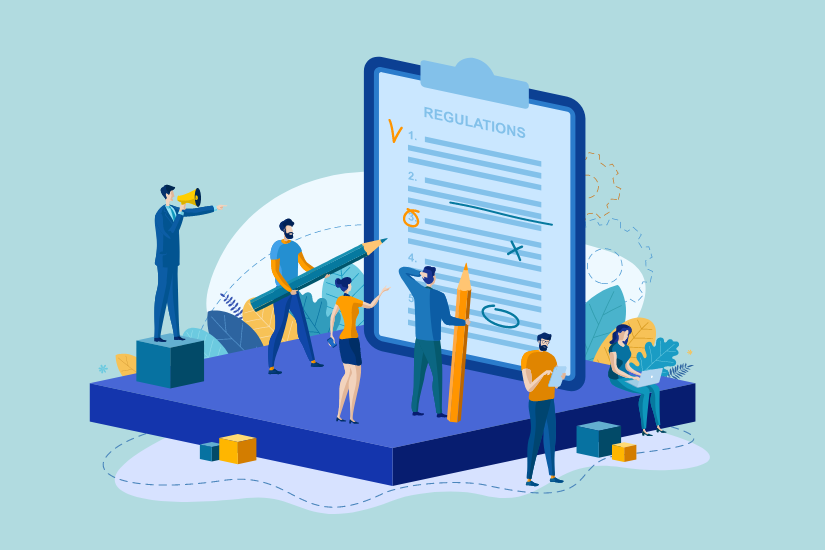Double materiality: five assessment methods businesses are using
Risks relating to the three pillars of ESG - environment, social and governance - are becoming increasingly important to organisations, especially as customer, shareholder and regulatory expectations around sustainability evolve. Our members are prioritising their double materiality assessments in response to these expectations.
In order to determine which of the many ESG-related risks could impact a business financially (and to what extent), as well as how its activities may impact both society and the environment, organisations are now facing increasing pressure to conduct double materiality assessments.
As a result of this increasing pressure, many organisations in our network are now making this a priority and are collaborating with one another to develop maturity in this area.
.png?width=900&height=600&name=Double%20materiality%20(2).png)
Based on conversations held between members, this article highlights methodologies risk teams are using to assess:
i) the impact of business activities on the wider world;
ii) the financial impacts of ESG risks on a business.
Which sustainability standards, directives and disclosures are your peers concerned about?While the Task Force on Climate-related Financial Disclosures (TCFD) framework indirectly encourages companies to consider double materiality, other more explicit requirements are likely to come soon. It is expected that thousands of European companies will soon be required to issue disclosures on their double materiality assessments in accordance with the European Sustainability Reporting Standards (ESRS), with other jurisidictions likely to follow. There's also the Corporate Sustainability Reporting Directive (CSRD) recently adopted by European Parliament, which is due to come into practice in 2025 and will ask organisations to take a double materiality approach to their ESG reporting. Members are also concerned with the recent release of standards from the International Sustainability Standards Board (ISSB) which several of our global member organisations are prioritising to highlight their sustainability credentials. |
Inside-out: two methods for assessing impact materiality
-
Analysing the results of a survey
The first move one organisation has made is to identify and prioritise a manageable number of group-level material topics. This was achieved by performing an internal survey of 25 subject matter experts and stakeholders, as well as a series of 45 validation interviews with key external stakeholders.
After identifying 14 material topics a further level of analysis was conducted to determine the following attributes, which helped rank the material topics by level of significance:
- Actual positive impacts
- Actual negative impacts
- Potential positive impact x probability
This exercise is supported by 'traditional' risk management assessments, including the use of five-point scales.
-
Combining material and financial impact assessments
Another practitioner approach involves a combination of both financial and impact materiality under one assessment, led by external corporate affairs and sustainability specialists independent from the business.
Data is collected via a survey of internal and external stakeholders, with the core aim of deriving a consensus of areas that are particularly important to the business. Further scrutiny is then applied to these topics based on a broad definition of 'materiality' - i.e. having a significant impact on investors and the organisation's bottom line.
Click here to download the meeting notes in a digestible pdf.
Outside-in: three ways to determine financial materiality
While efforts to determine financial materiality are a work-in-progress for most of the network, three potential methods for measuring financial materality have been highighted by risk leaders in recent collaborative discussions.
3. Plotting two impacts on a graph
- Plot all materiality topics on a graph as follows: capital of impact along the Y axis and severity of financial materiality along the X axis. This helps to provide a score on the level of range of impact linked to financial materiality.
- The information then aids senior management discussions about which material and financial materiality topics to focus and report on.
4. The use of proxies
- Others are leveraging existing scales and risk assessment methodologies for financial materiality assessments. Pre-determined codifications are also applied, in terms of assessing potential loss or additional costs.
- However, if measures are unavailable, 'proxies' are used to determine a range of impact. For example, in health and safety, a single fatality would represent the same code as a certain range in terms of loss.
5. Financial materiality indicators
The following indicators are being used by organisations in our network to determine financial materiality:
Impact on revenue
Impact on cost of sales
Operational expenses
Is the P&L impacted?
Is the balance sheet impacted with cash or CapEx?
Impact on inventory
Impact on liabilities
Timing and magnitude of the financial impact
including: the earliest time of impact, the time range, the maximum impact
.png?width=900&height=600&name=Double%20materiality%20(2).png)
Analysing the impact of reputational risks
Some organisations are using methodologies to calculate the financial impact of reputational consequences linked to ESG.
| One company is making use of aggregated scores to determine consumers' perspectives of its environmental performance. This is tracked across specific markets to determine the correlation between reputation score and consumers' intent to purchase. |
Furthermore, a few risk leaders shared the indicators they are using to determine the link between ESG and impact on reputation. Just a few of these indicators are:
- Impact on trust
- Exposure in traditional social media
- Government or regulatory engagement
“Most members at our recent meeting agree that any assessment of reputation risk should also include language about opportunity rather than just threat; whilst a failure to deliver sustainable products or services to customers may constitute a threat to the business, there are opportunities to boost growth by demonstrating positive behaviours."

William Sanders
Co-founder, Risk Leadership Network
These insights were shared at a bespoke meeting which we facilitated because a specific Risk Leadership Network member approached us with double materiality assessments as their priority. To discover how our tailored approach could help you with your next challenge, take a look at how membership works.
Share this
Related posts you may be interested in

How to create standout risk reports that demonstrate the real value of Risk

Levelling up climate risk reporting: our TCFD Reporting Comparison Tool
